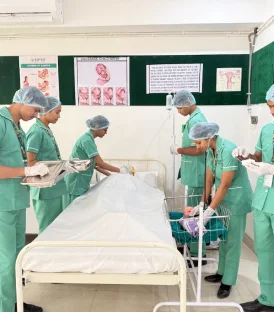Chancroid is a sexually transmitted infection (STI) caused by the bacterium *Haemophilus ducreyi*. It is characterized by painful ulcers on the genitalia and swelling of the lymph nodes in the groin area. The ulcers often start as small red bumps that evolve into open sores. Chancroid is also more common in developing countries and is associated with an increased risk of HIV transmission due to the open sores providing an entry point for the virus. Treatment typically involves antibiotics to eliminate the bacterial infection. Chancroid is a bacterial sexually transmitted infection (STI) caused by Haemophilus ducreyi. Here are the primary factors contributing to the occurrence and spread of chancroid that are as follows:
- Sexual Transmission: The primary mode of transmission is through sexual contact with an infected person. This includes vaginal, anal, and oral sex.
- Skin-to-Skin Contact: The bacteria can enter through minor cuts or abrasions in the skin or mucous membranes during sexual activity.
Lack of Hygiene: Poor genital hygiene can increase the risk of infection, facilitating the spread of *Haemophilus ducreyi.
- Multiple Sexual Partners: Having multiple sexual partners increases the likelihood of encountering an infected individual.
- Sex Trade: Engaging in or frequenting commercial sex work environments is associated with a higher risk of chancroid due to higher rates of sexually transmitted infection in these populations.
- Uncircumcised Males: Some studies suggest that uncircumcised men may have a higher risk of contracting chancroid, possibly due to the accumulation of bacteria under the foreskin.
- HIV Infection: Individuals with HIV are more susceptible to chancroid due to their compromised immune systems. Additionally, chancroid can facilitate the transmission and acquisition of HIV.
- Low Socioeconomic Status: Limited access to healthcare and education about sexual health can contribute to the spread of chancroid in economically disadvantaged populations.
Preventative measures include the practicing safe sex (using condoms), maintaining good genital hygiene, reducing the number of sexual partners, and seeking prompt medical treatment for any symptoms of sexually transmitted infection.


















